Kingdom of Mind CONCLUSION
Path to AGI ends in a Cornfield
October, 2025

Previously on Kingdom of Mind...
In Part One, we introduced Turing's "Imitation Game," Moravec's Paradox, and Minsky vs HAL 9000.
In Part Two, we introduced a working definition of Intelligence and the Bitter Lesson.
In Part Three, we introduced the Child-King and the Illusion of Sovereignty.
In Part Four, we introduced 'stepping up' from Language and 'stepping down' from Consciousness.
In Part Five, a breakdown in Consciousness through physical trauma and ICU Psychosis.
In Part Six, we surveyed the Split Brain and other atypical conscious configurations.
Level of Intelligence
In the previous section I teased about "the level of intelligence required to engineer artificial consciousness or upload human consciousness into a machine." The 'level' to which I refer is along the 'Stupid to Intelligent' scale. 'Stupid' is not going to help with engineering consciousness. And even if massively scaled, a 'Dumb' process cannot result in consciousness 'emerging.' If this seems like a trivial statement to you, congratulations. Some readers will find this sacrilegious. How can I say, they will ask, that consciousness does not emerge at some point from a 'Dumb' process? It had to come from somewhere!
I'm not trying to sneak in 'faith-based metaphysics' here, but rather to point out that complexity and emergence necessarily require levels. You can't jump from molecules in a petri dish to a social structure without going through life first. Adding more and more molecules to the dish won't force it to happen.

Unpacking the Suitcase
Marvin Minsky is credited with coining the term 'suitcase-word.' It's a characterization he uses frequently and it captures why understanding consciousness has historically been elusive. Do we know much more about human consciousness than the ancient Greek Philosophers? Thankfully, we have learned about anesthetic drugs which shut down the entire suitcase of consciousness, but mastery of its contents is still lacking.

"This, I maintain, is why consciousness seems so mysterious. It is not that there's one basic and inexplicable essence there. Instead, it's precisely the opposite. Consciousness, instead, is an enormous suitcase that contains perhaps 40 or 50 different mechanisms that are involved in a huge network of intricate interactions."
— Marvin Minsky1
Some useful attempts have been made to identify the components and functions of consciousness, but they typically only describe attributes of the suitcase. Minsky was a fan of psychologist Sigmund Freud since Freud at least recognized differentiations within the mind. He was best known for introducing the 'Ego', 'Id', and 'Superego.' Freud also introduced an "Iceberg Theory" which Minsky characterized as "several grades of consciousness." For Freud, 'Consciousness' is the visible part, or 'tip' of the iceberg. 'Preconscious' is below the water line and consists of all that can be retrieved via memory. 'Unconscious' is the deepest portion, inaccessible via consciousness and is the primary source of behavior. This metaphor maps Ego, Superego, and Id to these regions. Ego is usually the one portion represented at the conscious level.
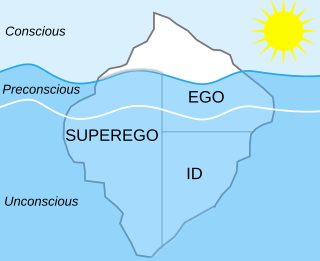
The Freudian model largely deals with emotions and drives, not components of consciousness. It certainly doesn't break down into the "perhaps 40 or 50 different mechanisms" Minsky mentions in the 1998 interview, or "possibly 16 different processes" he theorizes in 2007, or the less specific "20" he speculates other times. Freud provides background to a model of higher influences on the non-conscious portion of the mind I have been calling 'The Kingdom.'
Defending of the Kingdom
"Kingdom of Mind" is an intentional play on Minsky's "Society of Mind." Minsky is looking to identify several hundred agents that can do some simple tasks "that need no mind or thought at all." He takes a position that neuroscience will not succeed in engineering artificial intelligence because it is operating at too low a level. With the 'Kingdom' model I have taken an approach at an even higher level than Minsky did. I am attempting to illuminate the ROLES agents assume, manifesting in our conscious awareness and revealed through introspection.
'The Kingdom' is not just a cutesy metaphor. I think it captures a structure that resonates with us both culturally and mentally. Children's stories have not shifted away from Kings and Queens, Princes and Princesses to the challenges of forming a Coalition Government. Despite a 2,500-year head start, there are no fairy tales of the Roman Senate either. Part of the popularity among children may be a pattern from the nuclear family. Dad and Mom are King and Queen. The children can cast themselves as royal heirs or beleaguered peasants, depending on the day. The origins of some fairy tales reveal that these stories have a lifespan longer than that of the oldest creatures on Earth.2
That our minds accept Kingdom metaphors so easily could be from generations of exposure to that type of organization. On the other hand, the social structure that manifests as a Kingdom may come from functionality provided by the mind itself. If the mind has a King in charge, maybe the tribe should have one too. We might readily accept a Royal King and his Court because those roles are instinctively manifested. (The influence could also be bidirectional.)
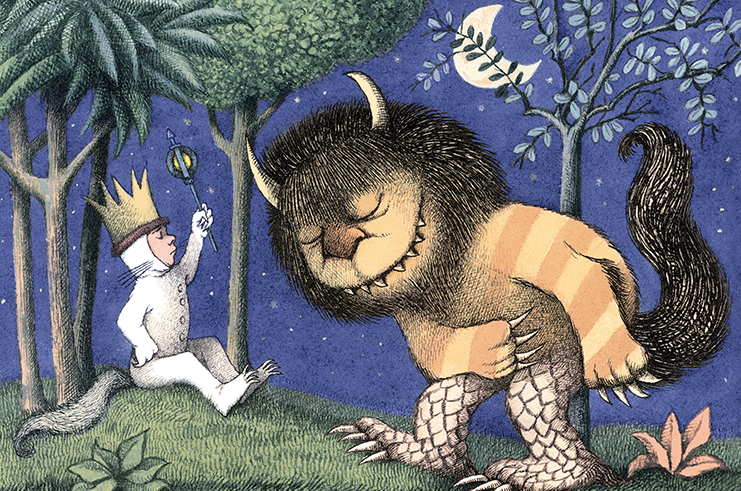
Id emerges from darkness to accept blessings from the Child-King.
Functional Roles within Neuroplasticity.
In seeking components "that need no mind or thought at all," Minsky's Society of Mind seeks to define agents that, in fact, have no agency themselves. Conversely, the agents I refer to in Kingdom of Mind not only have agency; they are taking on roles. Roles can be shared or swapped when required. When we look at business organizations, the President's role has specific critical duties. But in an emergency, if a function from another role goes unfilled, the President can still answer a sales call or ship a package. And a Vice President can fill the role of the President when required. A role-based organization is far more robust than a fixed component one. The human mind is more likely to be role-based.
Within the Kingdom of Mind metaphor I have been identifying agents that belong to the Aristocracy: King and Queen, the Royal Court, and titled Nobility. These are the agents able to make an appearance on the mental stage we call Consciousness. But what of the rest of the Kingdom? Who does all the actual work? These would be the working class — the Peasants. I believe the Peasants fit the roles of Minsky's agents, the ones who don't really have individual agency. They serve narrow functions in service to their estate. It seems reasonable that collections of neurons could be matched to these narrow functions.
The Modern Prometheus
“I am an unfortunate and deserted creature, I look around and I have no relation or friend upon earth. These amiable people to whom I go have never seen me and know little of me. I am full of fears, for if I fail there, I am an outcast in the world forever.”
“Remember that I am thy creature; I ought to be thy Adam, but I am rather the fallen angel."
“If you will comply with my conditions, I will leave them and you at peace; but if you refuse, I will glut the maw of death, until it be satiated with the blood of your remaining friends.”
—the creature, Mary Shelly's "Frankenstein" 1818
'Frankenstein's Monster' is yet another morality tale where creating a conscious entity ends tragically. Modern reinterpretations of the story feature an almost mechanical version of the creature named "Frankenstein." From the original story (quotes above) your own "Theory of Mind" should tell you, instead, that this is another conscious entity, haplessly engineered through science of the day.
How many stories feature artificially induced consciousness that end well? Like none. At best there are a few friendly robot helpers like R2-D2 and C-3PO, but more often, created consciousness turns against humanity. Isaac Asimov actually named it the "Frankenstein Complex."
Not wanting to seem technophobic, some stories try to explain why it's not the fault of artificially created consciousness. HAL 9000 was programmed to lie about the mission so that excuses its behavior? The Terminator returns as a protector?
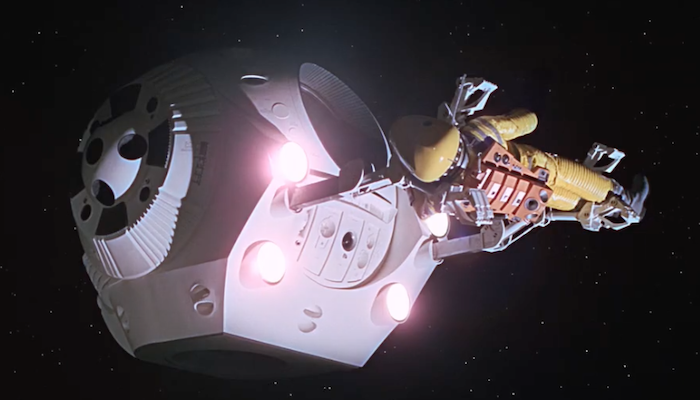
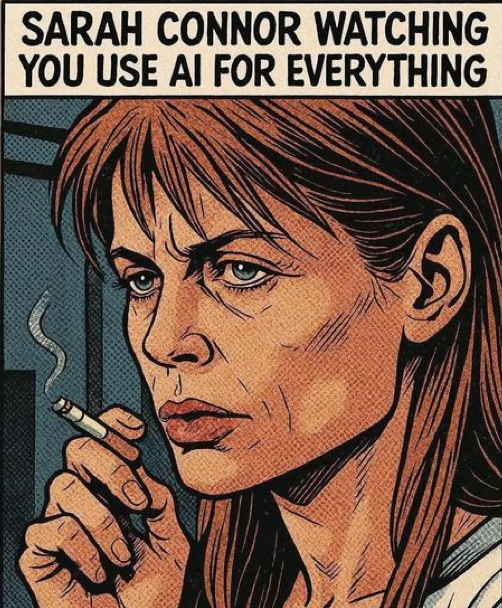
Frank Poole, murdered by HAL 9000, does not accept your apology.
New conscious entities are created, inadvertently, all over the world every second of every day. The embodiment vessels are called 'babies,' and they are easy to make and are plentiful. With such a plentiful natural source it should strike you as odd that scientists want to create consciousness artificially.

Thank You, Mr. Feynman
Helpful AI, like R2-D2 and C-3PO, require Intelligence but not Consciousness as we have identified it. The creation of "smarter machines" follows a path proposed by Marvin Minsky and the heuristic/symbolic approach. That approach involves identifying useful elements of human problem-solving and selectively incorporating them into helpful machines.
If the helpful droids of Star Wars only require Intelligence and can operate without a consciousness that could turn against humanity, why add that capability? Is building artificial consciousness merely Science's 'quest for understanding' as Richard Feyman suggests?
Here is something else to ponder, regarding the Artificial Neural Network (ANN) approach. Consciousness is supposed to spontaneously emerge from an ANN after given enough resources. ANNs are supposed to model a brain, correct? But what kind of brain? A rat brain? An alligator brain? An ostrich brain? What directed ANNs to mimic Human brains in particular, if we have followed the Bitter Lesson and avoided the "human-knowledge approach?" What if we organically grew a giant tub of biological neurons, bigger than any possible animal brain, and somehow exposed it to every Tik Tok video? If we then allowed the neurons to self-organize, would a successful Teen Influencer spontaneously emerge?
I don't think the actual goal is to create artificial Consciousness. Artificial Intelligence is adequate for guiding useful robots. The purpose of creating an artificial consciousness as Feynman calls out, is to understand how Consciousness can be housed in a digital computer. And who would want consciousness housed in a digital computer? Certainly not "wishy washy people... who dream of an afterlife, and heavens and gods and mystical experiences, and eternity.3"
People who dream of uploading consciousness may identify as Atheists, but they still have the same kind of Child-King declaring "Oh yes, I will persist." If Consciousness can't shift to a metaphysical plane in an afterlife, perhaps escaping into the security of a digital computer will do the trick.
Three Worlds Outside the Kingdom
In the late 1960s, Philosopher Karl Popper introduced his "Three Worlds theory4." The 'Three Worlds' model I am going to introduce is substantially inspired by his theory but there are differences at the boundaries of each world. These modified boundaries will yield better and intuitive benefits for our topic.
World One is the physical world and consists of all MATTER and its interactions.
World Two is the world of LIFE, which emerged from the Matter in World One.
World Three is the world of STORY, which emerged from the mental activities of Life in World Two.
These boundaries are very clean and each World represents the necessary order of emergence. The higher Worlds, 2 & 3, are each dependent on the World directly below them as a substrate. There are dependencies within each world (e.g. chemical reactions depend on molecules which depend on atoms and physics) but definitionally, the dependence between Worlds is dynamic. If the dependence were static, they would not be different worlds. A life object (organism) is comprised of matter. Over the period of its lifetime almost every particle of matter will be swapped out, yet the organism still retains its identity in World Two.
Stories require a substrate of storytelling organisms (e.g. Humans) and although they can be recorded in World One, their existence requires both encoding and decoding by World Two entities. Stories have a beginning, a middle, and an end, like the elements of World Two from which they emerged.
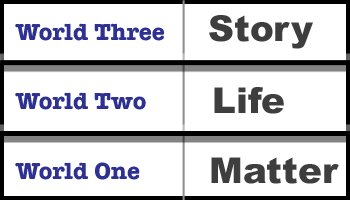
Every Creature's Situation
"I hope we don’t go further down so that we don’t lose what we have. But that’s built into every creature’s situation or matter how high or how low."
— Alan Watts

Alan Watts wrote "The Way of Zen" in 1957, hoping to make its lessons more accessible to the Western mode of thought. He didn't explicitly mention Popper's Three World model, but much of the three worlds seems intrinsic to his discourse (although he would probably insist any boundaries were illusory.) In the quote above he is talking about creatures moving up and down in increments of a transition. We would map these to movements within World Two. And when he speaks of "all the way down to death," that is the transition from life in World Two back down to the lifeless matter of World One.
Without a world level above, we creatures in World Two are stuck until we eventually fall back into World One's mortal embrace. But with the recognition of a World Three, the world of Story provides some promise of immortality. It didn't require Karl Popper to name this world for the Ancients to recognize it as a path to persistence.

Death was far more ubiquitous for our ancestors. Many cultures, especially warrior cultures, promised immortality through glory and fame. Achilles and Alexander the Great are known by more people today than when they were alive. So in a sense that promise was true.
"No one is truly dead until the last person mentions their name."
Some people in the modern world also seek immortality through story. Movies immortalize the images of actors, but rarely capture anything of their personal essence. In the end, attempting to achieve "life after death" through fame is as unsatisfying to the Child-King as organ donation.
For those concerned about the fate of their 'immortal souls' I want to emphasize that the "Kingdom of Mind" only calls out the Illusions around Consciousness. Based on the attributes an immortal soul should have, the soul is certainly more profound than the Child-King. Yet along with "Oh yes, I will persist," the Child-King may also declare, "'Tis I, your immortal soul!"
Those concerned with 'souls' should be busy redefining them beyond the illusions of the Child-King.
The Immortal Butterfly of Chaos
Nihilism is the philosophical view that life is meaningless. The transitory nature of your Child-King, however, does not add support to this position. You do not need to upload your digital personality, escape into Story, ascend to Heaven, or have your head cryogenically preserved to contribute meaningfully to Life. You have already created far-reaching effects by merely sitting and reading this article.
In 1961, Edward Lorenz had to manually reload data into a computerized weather model he was running. He rounded a starting value of 0.506127 to 0.506. Such a tiny difference should not have made any change to the outcome of weather predictions two months out and yet it did! The result is entirely reproducible; "Sensitive dependence on initial conditions" forms the backbone of modern Chaos Theory. You may have heard of it as "The Butterfly Effect."
In Lorenz's initial paper, he used the example of a seagull flapping it wings to cause a storm. A few years later that example escalated to a butterfly causing a tornado. The butterfly idea may have been borrowed from a 1952 science fiction story by Ray Bradbury. In "A Sound of Thunder," Bradbury has a time-traveler accidentally kill a butterfly during a T-Rex hunt, and this drastically changes the political landscape in 2055. Further riffing on the Bradbury story, Homer Simpson creates a toaster-based time machine, sneezes on a T-Rex — immediately killing ALL dinosaurs, which creates an alternate present where Donuts rain from the sky.
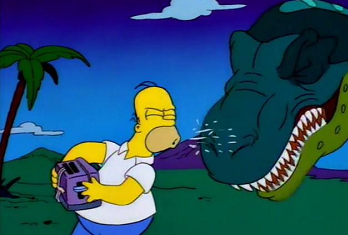
The idea that minor differences in events create an entirely different future was captured poetically even before Bradbury. In the Christmas staple, "It's a Wonderful Life," George Bailey is about to end it all when an Angel shows him an alternate reality in which he was never born. You've seen this movie. And you may have thought, "Wow, I didn't realize making a difference would be so simple." But the truth is, "Making a difference is not simple. It's easy, but complex."
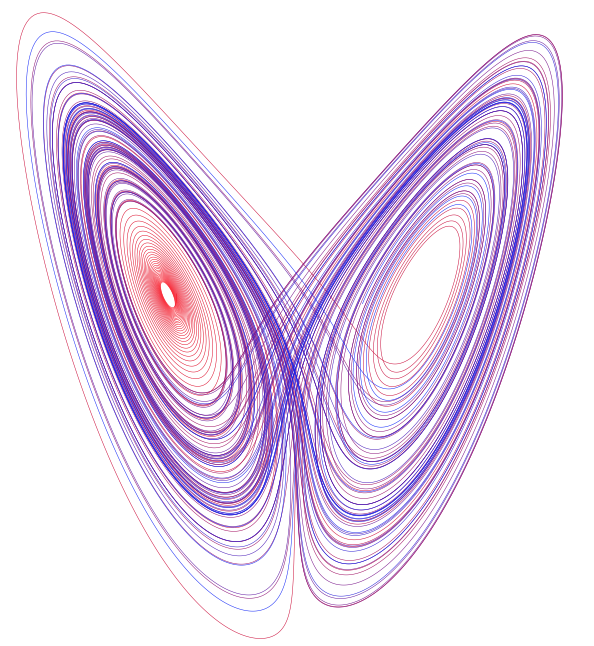
The graph above displays the output of the "Lorenz Attractor" algorithm. There are two attractor states and a real-time plot will seem to orbit one of them. So each cycle is very close, but not exactly the same as the previous one. A small perturbation can cause the output to jump and start pseudo-orbiting the other attractor.
Looking at the math, and not science fiction, we get a more realistic expectation of the butterfly effect:
Not all values produce a "butterfly-like" overlap of the two attractors. With some values, the plot endlessly orbits one attractor or falls into the center. The attractor is the powerful part of what almost always happens. Small changes are just averaged out. Stepping on a butterfly neither causes nor prevents a tornado. Not just "usually, " but "amazingly close to always." Until that one time a tiny cause has a major downstream effect. And you won't ever know when.
It's not just an issue of one butterfly not flapping, but what about the hundreds of offspring it would have produced? How many creatures might they have fed? How much stronger an input to the atmosphere is closing the door on your electric car compared to a butterfly wing?
Lorenz didn't propose that tiny inputs to a chaotic system have the same effect as big inputs. Bigger inputs have a bigger effect. But tiny inputs matter too, and sometimes they matter a lot.
When everything you do has an effect, then your choices can't become meaningless. Your very existence becomes inescapably meaningful, and your effect on the universe is eternal. ALL OF THIS IS YOUR PERMANENT RECORD. And you are doing the best you can.4
Consciousness and Intelligence
The royal stage of Consciousness did not emerge as singular ensemble through evolution. But elemental agents certainly did, and we should be looking for these components in our non-human companions. If we were to ask, "What sets Man apart from all other creatures?" I could accept that we alone have a Child-King. Since our Spectator can be functioning and aware while the Child-King is absent, it seems probable that other 'advanced creatures' can function similarly. If you have developed a relationship with a pet that seems to "think it is human," then possibly a Princess or other lower ranking royal could be acting as "Queen for a Day." See if that tracks. The last suspicion I will leave you with is this: Across the Kingdom of Mind, members of the Royal Family strongly believe in Magic. This trait is shared with our human ancestors and has taken a substantial amount of human culture to suppress it. Our non-human companions still believe.
Switching to Bottom Up
If we decide against engineering Skynet or the Torment Nexus, we can still find use in developing "smarter machines" as Marvin Minsky encouraged. This probably means negating the "Bitter Lesson," accepting a bottom-up approach, and doing the honest work of identifying the myriad cognitive priors used in Human decision-making.
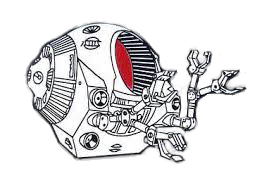
Identifying Human Cognitive Priors was the basis for the ARC Challenge proposed by Françios Chollet, an Artificial Intelligence scientist from Google. 'ARC' stands for "Abstract Reasoning Corpus" and was intended to act as an IQ test for human and non-human intelligence systems. The ARC "Corpus" is a collection of visual puzzles designed by humans in a way that other humans can almost intuitively solve them. They don't require prior cultural knowledge or even language. Supposedly, most of the puzzles can be solved by children.






 ⇨ ?
⇨ ? 
I became fascinated by the ARC puzzles specifically because I could "intuitively solve" many of them. What that means is before the Child-King even got started, some lower-ranking faction within the Kingdom already figured out the solution. Using the Child-King to reverse-engineer what was happening behind the scenes would provide brilliant insight into the evolution of problem-solving, both human and non-human.
I named the program I wrote to capture these insights ARCHIE. You can read all about how ARCHIE works HERE.
I programmed ARCHIE without any notion of what I would discover from solving the puzzles. I wrote the article about ARCHIE before deep-diving in to Minsky's "Society of Mind." Yet both are connected after all. You will need to read the ARCHIE article but I will leave these comparative quotes, separated by almost 30 years:

"With ARCHIE, I am suggesting that what developed was a 'Proto' Universal Grammar, originating in a primitive visual system designed for determining cause and effect. Compared to the most basic organic brain, it's very minimal. So it's amazing that this minimal system can still solve ALL the Symbolic Logic scenarios."
— Darren Lott, 'ARCHIE' 2025
So despite the false conclusion of the "Bitter Lesson" we can still make progress on creating intelligent machines.
And we are doing the best we can.
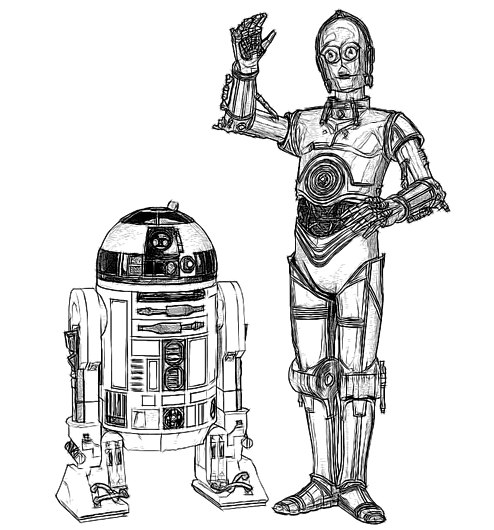
The other articles in Boundaries of Objectivity will explore this further. You can leave thoughtful comments or questions at the link below.
1. https://www.edge.org/3rd_culture/minsky/index.html
2. Methuselah, a bristlecone pine, is oldest known living individual non-clonal tree in the world at 4,875 years (by ring count). Folklorists have traced the motif for "Jack and The Beanstalk" to a language split 5,000 years ago. Other tales originated in the Bronze age over 6,000 years ago, and within the category of 'origin myths' are stories even older.
3. "State of Nothing Lecture" Alan Watts, https://steemit.com/life/@nicholi/the-beauty-of-nothingness
4. https://tannerlectures.org/wp-content/uploads/sites/105/2024/07/popper80.pdf
5. "Illusions (Part One)" by Samm Hodges on Vimeo at https://vimeo.com/groups/booooooom/videos/63609012